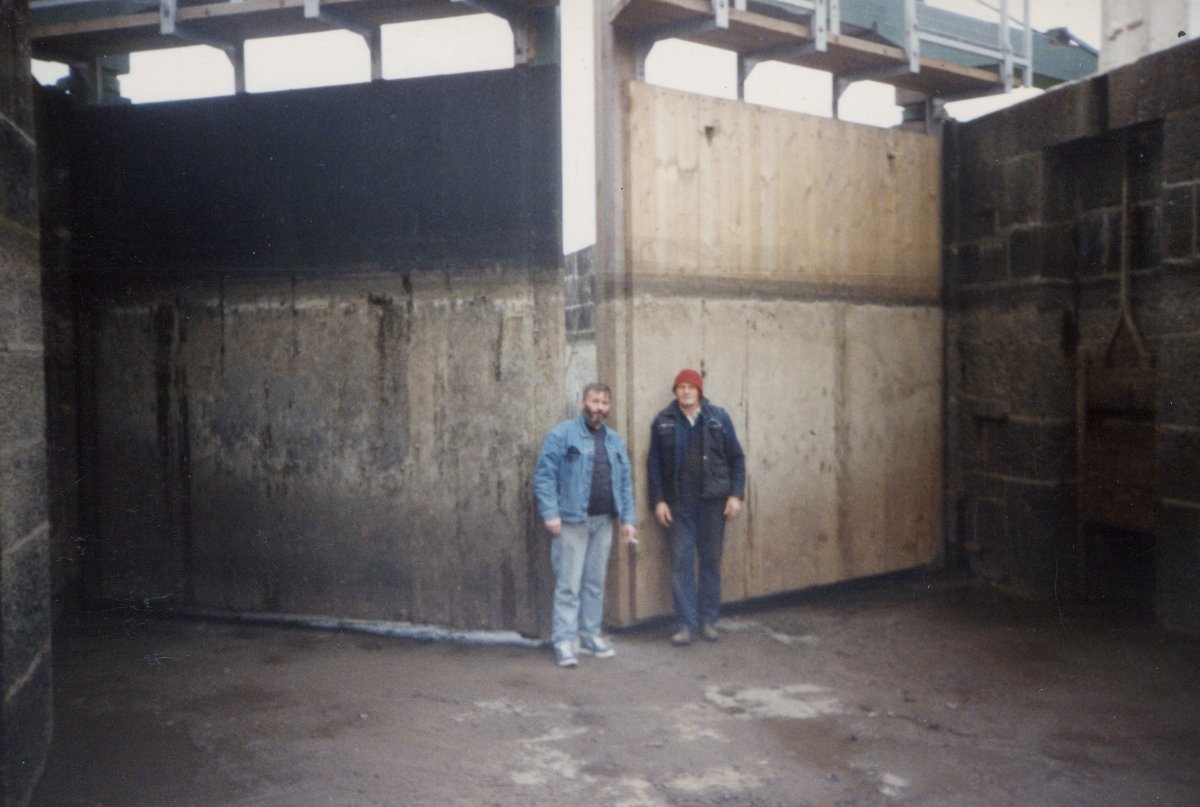Water Levels Drainage and Navigation
Water levels on Lough Neagh and flows in the Lower Bann are controlled by a system of sluice gates and weirs put in place as a result of a number of drainage schemes. A system of locks makes it possible to navigate along the full length of the river.
Although there had been earlier piecemeal attempts the first large scale drainage scheme was the McMahon Scheme carried out between 1846 and 1856 with a view to reducing the level of Lough Neagh and making the river navigable. This involved building 5 locks and weirs, the removal of a rocky shoal at Portna and limited dredging of the Lower Bann. Because of the engineering compromise between drainage and navigation requirements the McMahon Scheme was considered less than successful. Another drainage scheme, the Shepherd Scheme carried out in the 1930s involved deepening, widening and straightening of the drainage channel and replacing the fixed weirs at Toome, Portna and the Cutts with sluice gates. In response to continuing pressure to alleviate flooding around Lough Neagh the water level was further lowered in the 1940s and 50s by adjusting the management regime of the sluice gates at Toome. The net effect of these drainage schemes was a lowering of the Lough Neagh water level by about 2.5 metres and a reduction in the natural range of high and low water levels.
Current levels (updated daily) can be checked at https://www.infrastructure-ni.gov.uk/articles/lough-neagh-levels
The Lough Neagh & Lower Bann Drainage and Navigation Act
Water levels in Lough Neagh are prescribed through Lough Neagh (Levels) Schemes made under section 1 of the Lough Neagh & Lower Bann Drainage and Navigation Act (NI) 1955. The current Lough Neagh (Levels) Scheme 1955 specifies that the water levels of Lough Neagh should be maintained between 12.45 metres and 12.60 metres above sea level as far as conditions of rainfall, wind and other natural causes allow.
Sluice gate operation
The sluice gates are managed by Rivers Agency with the aim of maintaining the level of Lough Neagh within the 15 centimetres control range whilst at all times maintaining an adequate flow in the Lower Bann (when the sluice gates are closed a minimum flow to the Lower Bann is constantly discharged through a fish pass beside the sluice gates).
The water level in Lough Neagh is controlled by the Toome sluice gates. Within the statutory ‘control’ range of 12.45 metres and 12.60 metres above sea level Rivers Agency strive to maintain a ‘operational’ level of 12.47 metres during the winter months when the risk of lough draw-down is least and flood risk is high and 12.57 metres during the summer months when the opposite applies. The operating levels both provide a 25 millimetre margin within the respective closest limits of the control range in order to provide the necessary leeway. In practice it is impossible to consistently keep Lough Neagh levels within this narrow range because of natural floods and droughts.
Lower Bann Navigation
Never a financial success the Lower Bann was made navigable only in the 19th century in the steam age hence no towpath was needed as the barges were towed by steam tugs up and down the river. This caused problems as the flow in the river sometimes was too much for the tugs.
The Lower Bann Navigation operated commercially from the 1850s to 1929 when the Lower Bann Navigation Trust was abolished and responsibility was passed to government and thence to Rivers Agency. Today Rivers Agency look after drainage and Waterways Ireland control the navigation.. There are locks at Toome, Portna, Movanagher, Carnroe and the Cutts. The navigation is maintained to provide a minimum depth of 1 metre along its full length through the placement of weirs, the management of sluice gates and limited dredging.
World War 2
The Lower Bann was used by the military to transport munitions and supplies to and from bases around Lough Neagh.This included diatomite used to stabilise nitroglycerine, manufactured munitions and stores and the Torpedoes manufactured at Antrim.
To service the wartime barges an ad-hoc drydock was built at Portna using the fall of the double chamber lock to empty the dock.The drydock still exists but is no longer used.


Portna Dry Dock
created with
WordPress Website Builder .